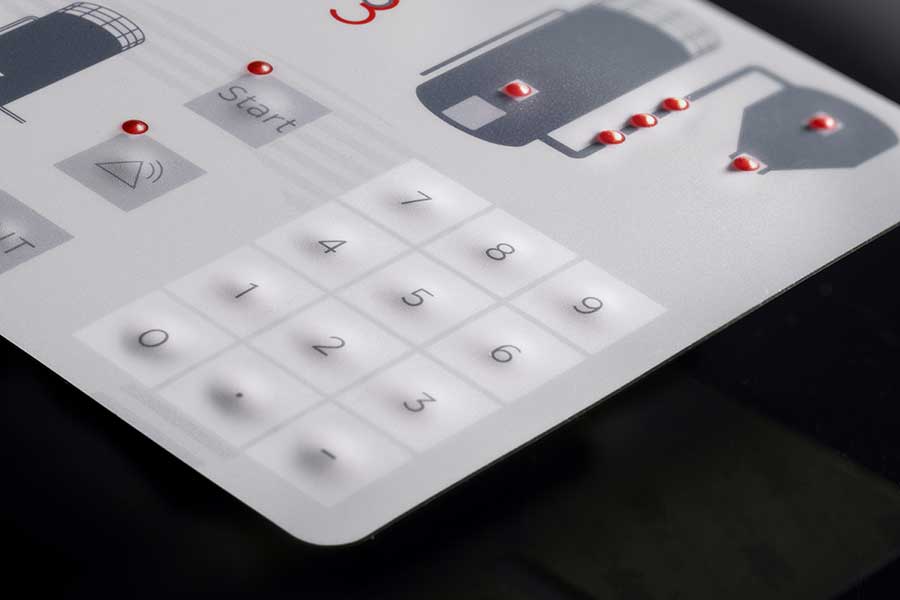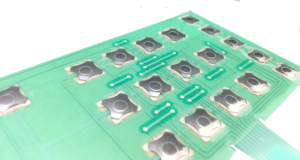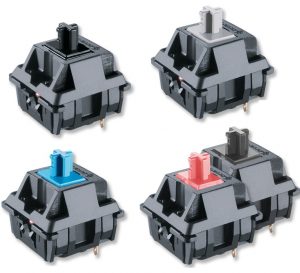How a Membrane Switch Enhances User Experience and Gadget Performance
How a Membrane Switch Enhances User Experience and Gadget Performance
Blog Article
Understanding the Capability of Membrane Switches Over for Interface Gadget
The capability of membrane layer switches stands for a substantial improvement in user interface style, integrating efficiency with aesthetic versatility. These buttons operate via a multi-layered framework that equates user interactions right into electrical signals, permitting both small designs and durability against ecological variables. As markets significantly prioritize user experience, recognizing the nuances of membrane layer switch modern technology becomes crucial. What effects do these developments hold for future applications, and just how might they redefine user communications across different devices?
What Are Membrane Switches?
Membrane layer buttons are cutting-edge user interface tools that promote customer interaction with electronic equipment. These versatile parts include several layers, including a graphic overlay, spacer, and a published circuit layer. The style permits for a seamless assimilation right into different electronic tools, boosting both the aesthetic and functional aspects of interface.
Membrane layer switches are frequently utilized in a wide variety of applications, from home home appliances to commercial equipment and clinical gadgets. Their building typically includes a thin profile, making them a perfect choice for portable designs. The tactile comments offered by these switches can be crafted to satisfy certain user choices, making certain reliable communication between the customer and the gadget.
Sturdiness is another substantial advantage of membrane switches, as they are immune to dust, moisture, and chemicals, which enhances their life-span sought after environments. In addition, these switches can be tailored in regards to form, size, and graphic layout, enabling for branding and user-specific features. On the whole, membrane switches over stand for a functional service for enhancing individual experience in digital tools, combining functionality with visual appeal in a reliable manner.
Just How Membrane Switches Over Work
Operating on an uncomplicated concept, membrane layer changes make use of a split building and construction to register individual input successfully. Each switch contains multiple layers, consisting of a published circuit layer, a spacer layer, and a top visuals layer, which are developed to work with each other flawlessly. When a user presses the top layer, it compresses the spacer layer, bringing the conductive components of the circuit layer into call with each other.
This call creates a closed circuit, signifying the device to carry out a details function. The style permits various setups, consisting of tactile responses, which can enhance the individual experience by giving a physical experience upon activation. The materials utilized in membrane layer switches usually include adaptable substrates, such as polyester or polycarbonate, which ensure toughness and durability against damage.

Trick Benefits of Membrane Switches

Another considerable benefit is their density. Membrane buttons are thin and lightweight, which makes it possible for makers to save space in their tools without sacrificing capability. This feature is specifically valuable in applications where weight and volume are vital factors to consider.
In addition, membrane buttons are immune to dirt, wetness, and chemicals, enhancing their durability. This strength extends their life-span and reduces the requirement for frequent substitutes, resulting in expense savings with time.
Furthermore, the responsive feedback offered by membrane buttons can be enhanced to improve user interaction. They can consist of functions such as raised buttons or distinct clicks, boosting usability and customer experience.
Applications Across Industries
Interface gadgets making use of membrane buttons prevail in a wide range of sectors, showcasing their flexibility and functionality. Membrane Switch. In the medical market, membrane layer switches are integral to devices such as diagnostic devices and patient tracking systems, where their longevity and convenience of cleaning are essential for preserving health criteria. In the automobile industry, these buttons are employed in dashboard controls and infotainment systems, providing a sleek and modern interface for users.
Moreover, the consumer electronics sector advantages from membrane layer switches in appliances and portable gadgets, where compact design and straightforward interfaces boost customer experience. Industrial applications likewise take advantage of membrane switches for control board in machinery and automation systems, emphasizing their robustness and resistance to harsh environments.
In the aerospace and defense sectors, membrane layer switches are utilized in cabin controls and devices, where reliability and efficiency under severe problems are critical. Additionally, the pc gaming sector significantly integrates membrane buttons in controllers and game devices, adding to an interesting individual experience. In general, the adaptability of membrane switches over enables their prevalent usage across countless industries, highlighting their significance in modern interface layout.
Future Patterns in Membrane Change Innovation

Additionally, making use of sophisticated materials, such as polycarbonate and polyester films, is expected to rise, supplying boosted durability and resistance to environmental stress factors. These materials add to the overall long life of membrane layer buttons, making them suitable for harsher industrial applications.
Furthermore, the incorporation of smart technology, including IoT connectivity, will make it possible for membrane switches to communicate with various other devices and systems, helping with an extra interactive customer experience. This fad aligns with the growing demand for wise devices across various industries, from health care to consumer electronic devices.
Last but not least, modification options are expected to broaden, enabling makers to produce bespoke options tailored to particular individual needs and choices. These developments will position membrane layer buttons as important elements in the development of interface technology.
Conclusion
In conclusion, membrane layer switches represent a crucial innovation in user interface technology, supplying a dependable and functional remedy for varied electronic applications. Their layered construction facilitates compact layout, while attributes such as tactile feedback enhance customer Continued interaction. The resilience versus ecological aspects additionally solidifies their utility across numerous markets. As advancements in product scientific research and touch sensing modern technologies proceed, the capability and applicability of membrane layer switches are expected to increase, enhancing their significance in contemporary digital devices.
Report this page